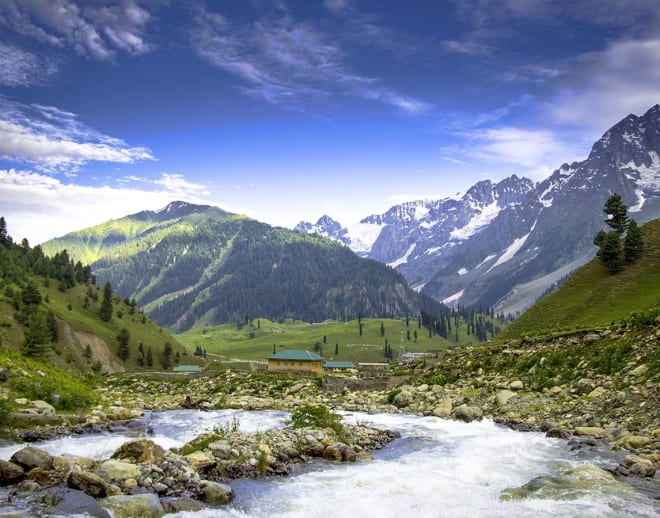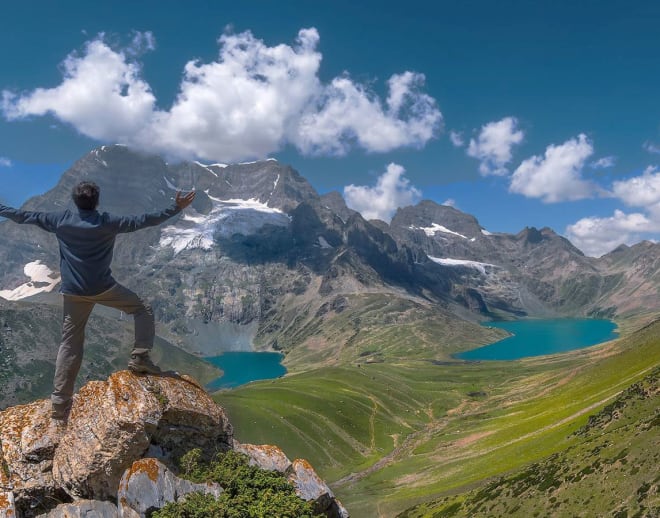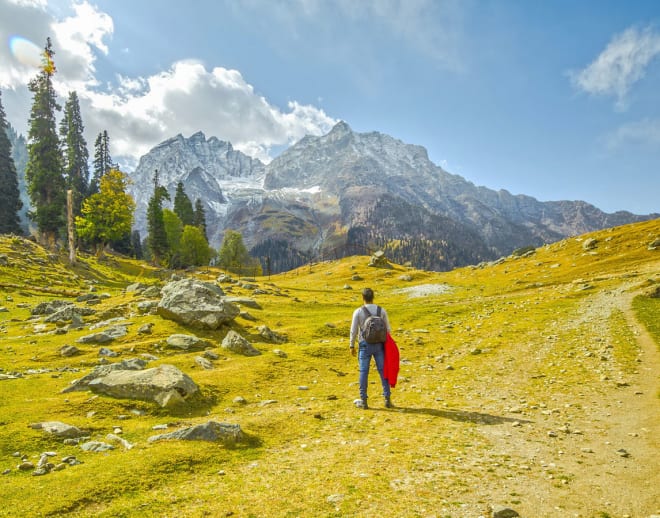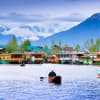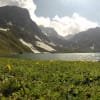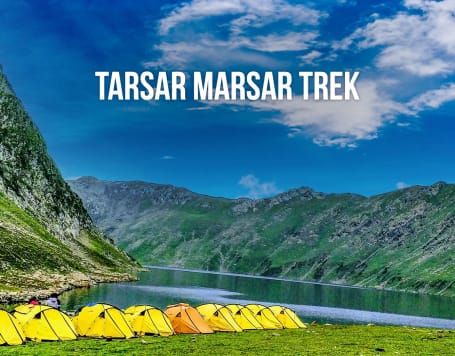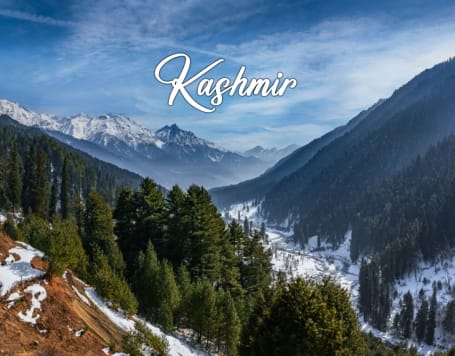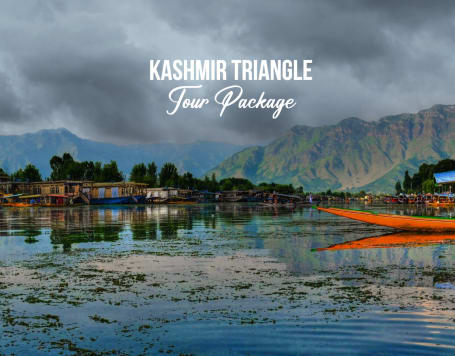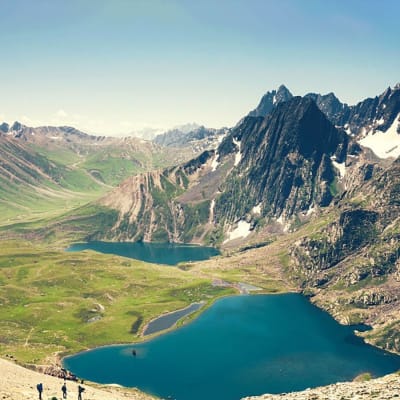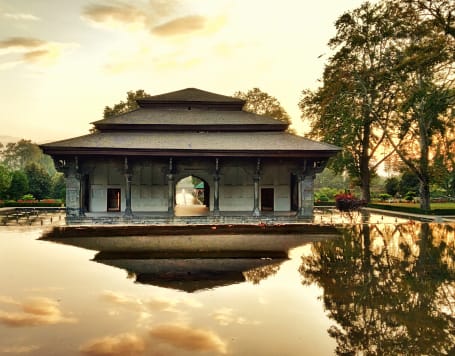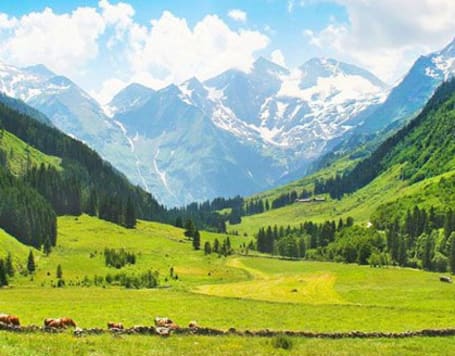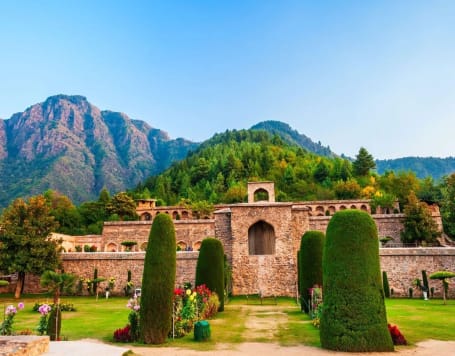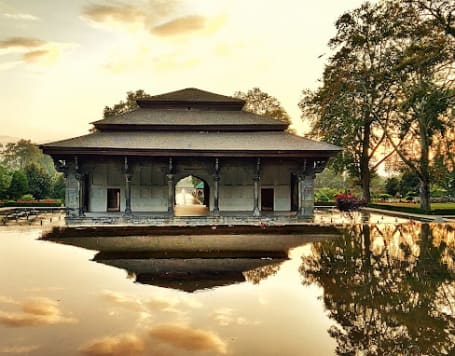The Kashmir Great Lakes: The most beautiful trek in india
If you are looking for the most beautiful trek in India then the Kashmir Great Lakes trek is one of the best treks for you. This trek validates the mythical status of kashmir as heaven on earth. The canvas of this trek is larger than life. It is located in Srinagar. As the name suggests, Kashmir Great Lake is popular for the beautiful lakes that come on the way while trekking.
You can have the best 360-degree view of rolling hills, flat meadows, alpine lakes, snow-capped mountains, and beautiful river valleys. You can explore more than 6 lakes and 5 valleys while trekking. It is a moderate to difficult trek spanning over six days. There are no easy exit points and it can be challenging to complete such a long-duration trek with steep ascents and descents. This trek is not meant for people who don’t have prior trekking experience. The high altitude can be challenging for beginners.
The mesmerizing views of rugged mountains, alpine lakes, and rolling meadows make it worth all the challenges you might face. The snow patches near the lakes make it even more beautiful. You will also see the icebergs floating over the beautiful lakes. The flat meadows of kashmir will leave you spellbound. These meadows are of all shapes and sizes.
Kashmir Great Lakes – complete trek information
It is our responsibility to keep trekkers well-informed before they go on a Himalayan trek. You’ll get every type of required information about the kashmir great lakes trek in this section. This will be extremely useful for you to know about the kashmir great lakes trek before going on the trek. In this, you’ll get an idea about what to expect, how to prepare for the trek, and how to reach the base camp.
Quick Itinerary
Day 1: Today you will drive to Srinagar to Sonamarg
Day 2: Drive from Gagangir to Shitkadi and then trek to Nichnai
Day 3: Today you’ll trek to Vishnasar from Nichnai via the Nichnai pass
Day 4: Via Gadsar pass today you’ll trek to Gadsar from Vishnasar
Day 5: Today you’ll trek to Satsar Lake from Gadsar
Day 6: Today you’ll trek via Zaj pass to Gangabal Lake from Satsar Lake. you’ll witness stunning views of Harmukh Peak and its glaciers.
Day 7: Trek to Naranag from Gangabal Lake and then you’ll drive to Srinagar
Day 8: Departure day
Location Covered in Kashmir Great Lakes Trek:
On this trek, you will come across beautiful lakes, villages, and river valleys. some of these places are mentioned below:
- Vishansar lake
- Gadsar lake
- Gangabal lake
- Satsar lake
- Sonamarg valley
- Nandkol lake
- Shitkadi village and some more stunning locations.
How difficult is the Kashmir Great Lakes trek?
The Kashmir Great Lakes trek is categorized as a moderate to difficult-level trek as this trek climbs up to 13,715 ft. This trek is rated as moderate because of its long trekking days and steep climbs in between. On this trek, you’ll be able to have the most stunning views of meadows and pristine lakes.
If we talk in detail, this is a six-day long trek and you will have to cover a distance of 75 km. you’ll trek for 12 km each day and climb around 1500 ft. every single day.
Here’s a list of 5 difficult sections mentioned below:
- Climb to Nichnai campsite on the first day
- You will have to ascent continuously to Nichnai Pass from the campsite
- The climb to Gadsar Pass is one of the most challenging ones
- While trekking to Gangabal Lake from Satsar Lake you will face boulder sections.
- Toward Naranag it is a steep descent
- First day climb to Nichnai campsite
You will face challenges on the Kashmir Great Lakes Trek in the first hour of the trekking trail. The trek starts from Shitkadi. From here the ascent to Nichnai can be challenging as you will have to climb up to 3000 ft. on the first day. It will be a 6-7 hours long trek. The high altitude can result in acute mountain sickness.
- Contunies ascent from Nichnai campsite to NIichnai pass
The challenges continue on the second day as well. You’ll have to climb to Nichnai Pass from the campsite which might take around 3-4 hours to complete.
- Boulder sections between Satsar Lake and Gangbal
On this day you’ll come across big boulder sections. It is a 40-minute-long section and you won’t find any trail over here. You need to jump and hop-skip on these sections to cross. It can be challenging for you if you are not prepared physically and mentally.
Safety while Trekking to Kashmir Great Lakes
Safety while trekking in kashmir is one of the main concerns of trekkers. In this article, you’ll get an idea about that aspect.
Kashmir Great Lakes trek can indeed be risky as this is a 75 km long trek that takes you deep into the valley and you might come across deep craters on your way. On your route, you’ll pass 3 high passes. The great altitude of 13,750 ft. makes it even more challenging. There are some boulder sections and streams that you will need to cross.
At Banbanjara we believe that you can tackle high-altitude treks if you are well-prepared and well-informed. We’ve mentioned a few aspects of the Kashmir Great Lakes Trek to prepare you effectively.
Safety while trekking in Kashmir
If you are traveling to kashmir here are a few points that you should keep in mind while staying here to ensure your safety.
- Book your stay in tourist areas like Dal Lake or Lal Chowk if you are planning to stay overnight in kashmir.
- Do follow the instructions given by your trek leader
- Dress according to the dress code followed by other people there.
- Do not go to downtown areas as it can be unsafe. You should stick to touristry areas during times of unrest.
- Stay indoors if there is a curfew and don’t panic.
- Banbanjara organizes early-hour pickups before dawn to reach the base camp at the time of unrest.
- There will be army check posts (Army checkpoint) to ensure your safe trek.
Terrain wise Safety Details
In Kashmir Great Lakes Trek you’ll find rugged terrains. To pass this you need to have good physical health. The route of Kashmir Great Lakes Trek is marked with:
- There are Steep descents and ascents
- The trekking days are long
- The sections after Satsar Lake are boulder
- After Vishnusar there are no easy exit points
If you want to be safe you should keep yourself well-prepared. Set a goal to jog for at least 5 km in 40 mins. Train your glutes and muscles around the knees. For boulder sections, you should go hopping exercise.
Altitude Wise Safety Details
As mentioned in the above sections, you might face acute mountain sickness because of higher altitudes. You should analyze your body and inform your trek leader in case you feel anything unusual. Before starting the trek you should stay in Sonamarg Valley as a precaution so that your body can adapt to the environment which can make the altitude gain easy.
If you feel anything different about your body, or you feel sick then you should not ignore these symptoms. You should take the necessary measures so that you can tackle AMS. drink enough water, rest, check oxygen levels. You should not go trekking if you feel the same uneasiness after a few hours or overnight.
Emergency Exits
This trek takes you through high passes and valleys due to which there are no easy exit points. In case of emergency, the evacuation may take time. The descent becomes slower than normal because of the narrow and steep trails.
You can find the closest hospitals here in Sonamarg, kangan, or Baltal. You should head to Srinagar if you want serious medical attention.
How to reach the base camp
The Kashmir Great Lakes is a group of some of the best glacial lakes and glaciers. This path is connected by the majestic, winding path that will take you by the unbelievable scenes of nature that you will see everywhere. It is such an amazing trek which frequently begins from Sonamarg, a place in the Valley of Kashmir.
By Air:
Srinagar is the center of the state, Srinagar does not only have its own International Airport which is connected to all the major cities of the country. It has a railway station and bus terminal as well. From here, you can either take shared taxis or a private car to reach Sonamarg. The journey to Sonamarg by road is around 120 kilometers away from Srinagar and will take about 3 to 4 hours in your car.
By Road
From Srinagar
Srinagar is well-connected to major routes in the country. You can take a cab or public transport to get there and after that to reach the base camp you can hire a taxi or shared
cab.
From Jammu
From Jammu, you can take a cab, bus, or private car to Sonamarg Valley. After leaving Jammu a 10-12 hours road trip will be required to reach Sonamarg.
By Train
To reach Sonamarg by train you can reach the nearest airport to Sonamarg which is located 360 kilometers away from Jammu and is connected to major cities of India. You can also take a train to Udhampur railway station which is located 260 km away but this railway station is not connected to the major cities in india.
Why get fit for the Kashmir Great Lakes trek?
Getting fit for the trek is one of the most important things to do. It is advised to jog daily to get fit for this trek. While jogging the same muscles get trained which are used in trekking. It will help you increase your stamina and it is easier than any other exercise as there is no need for any special equipment to do this.
Fitness target: if you want to do this trek easily and comfortably then you must be able to jog for about 5-6 km in 35 mins. This is the minimum level of fitness required for the trek.
How to achieve this fitness?
- You should jog for at least 4-5 hours
- Start with 2 km if you can’t run 5 km in the starting and gradually increase the speed
- Increase your pace day by day once you pass the criteria of running for 5 km in 35 min
- This should be done for 2 weeks before the trek and you should be consistent.
You will need to prepare yourself for at least 6-8 weeks to get better results
Why does fitness matter?
It is important to get fit if you want to go on a high-altitude trek. If you are not well prepared it can be very challenging for you to complete the trek. Walking on uneven terrains, crossing streams and valleys is not an easy task. You should be prepared to face any kind of challenges the trek throws your way.
Amazing Tales and Stories About Kashmir Great Lakes Trek
In this section, you’ll get to know about the things that nobody tells you about the Kashmir Great Lakes trek.
The wonder of Wangath ruins
- Naranag temple: this ancient temple was built by Lalitaditya Muktapida. People believe that this temple was built in the honor of lord shiva. Shivling and multiple carvings that are linked with Shiva were found at this place. This temple is also believed to be dedicated to the divine snakes of Hindu mythology (nagas) according to another field of study.
In the region which is now kashmir in ancient times, the nagas were worshipped here. During that time these were said to be the primary religion. This is one of the most famous ancient archaeological sites in India which is lying in ruins now. But still, it is one of the most beautiful archeological places.
Surprise elements on KGL
- Trouts, The only life in Krishansar and Vishansar lakes: the Vishansar lake is known as the ‘home of lord Vishnu’ and the Krishansar lake is known as ‘the lake of Krishna’. Both these are well connected and the same water flows in both of them.
Nothing can grow in these lakes due to the lack of algae which plays a major role in supporting plant life in the water. You will only find a trout fish living in this water even without the algae.
On the other hand, the Gadsar Lake always looks green due to algae formation in it. Fishing in these lakes has become one of the most famous adventure activities for tourists visiting here.
Mythological significance
- Harmukh, the home of lord Shiva
According to local mythology, it is believed that Harmukh Mountain which is located at a height of around 16,000 ft. is known as the home of lord Shiva.
According to locals, it is believed that a saint tried to climb up this mountain to meet lord Shiva. He faced lots of challenges but he continued to climb up. He continued his efforts for around 12 months. He was unable to reach the top of the mountain but during this process, he received nirvana and disappeared from there. To worship lord shiva pilgrims climb up 14,000 ft.
For a great trigonometric survey, the first expedition was led by Thomas Montgomerie in 1856. The interesting thing about this was that on this expedition world famous K2 was discovered for the first time.
What Our Trekking Expert cum Founder Says about Kashmir Great Lakes Trek
Samarth Garg, founder of Banbanjara
Samarth Garg is the founder of Banbanjara. He has explored a few of the greatest Himalayan treks in India, including the Kashmir Great Lakes trek and the Kedarkantha Trek. Here Samarth is talking about this experience on the most stunning treks in our country.
What I like and don’t like about the Kashmir Great Lakes Trek
- What I like about the KGL trek
Stunning scenery: The Kashmir Great Lakes trek is famous for its breathtaking views. This trek allows you to explore the true beauty of nature. The beauty of majestic rugged mountains and the beauty of alpine lakes left me spellbound. On my way, I passed across bursting meadows with wildflowers.
Cultural experience: this trek will help you learn about the local culture of people residing in nearby villages. While trekking you’ll pass through beautiful small villages where you can get a glimpse of the culture and lifestyle of local people. I also tried Kashmiri rajma which is a delicious traditional cuisine of kashmir in this village.
Moderate difficulty: as compared to other Himalayan treks this trek is moderate in difficulty. There are a few challenging sections but you can easily pass them if you have a great fitness level. I had prior trekking experience so it was not that difficult for me but I saw people who were trekking for the first time and they were easily able to fight all the challenges, you just need to be well prepared.
-
What I don’t like about the KGL Trek
Crowds: due to the increasing popularity you may find crowded trails. This can make your trekking experience a bit exhausting. If you are planning a trek in the peak season which is from July to August you may find the most crowded trails. If you want to have a peaceful trekking experience then it might detract from your experience.
Limited availability: another thing that I think is not good about the KGL Trek is the limitation of permits. You might face this problem, especially during the peak times. Make sure you book in advance if you are planning to go to the kashmir great lakes trek.



